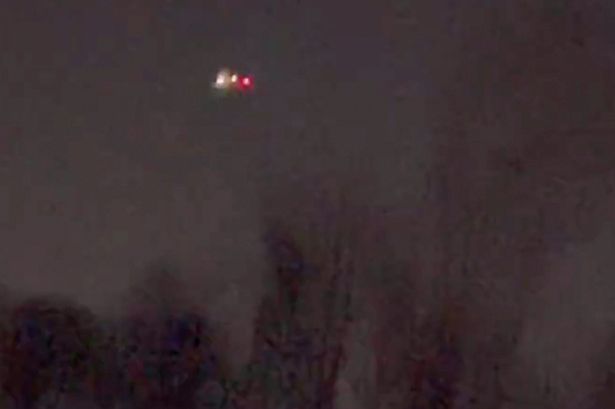The emergence of unidentified drones over sensitive areas in both the United States and the United Kingdom has sparked widespread concern and speculation, raising questions about national security, potential surveillance activities, and the capabilities of both state and non-state actors. Since early November, a series of drone sightings has been reported across portions of New Jersey and along the East Coast of the United States, followed by similar incidents over US military bases in the UK. These events have underscored the vulnerability of critical infrastructure and military installations to relatively inexpensive and readily available drone technology, highlighting the challenges in detecting, tracking, and neutralizing these small, unmanned aerial vehicles. While the origins and purposes of these drones remain largely unknown, their presence raises a spectrum of possibilities, from harmless hobbyist flights gone astray to more nefarious scenarios involving espionage, reconnaissance, or even potential disruption.
The initial wave of drone sightings in the US focused on New Jersey and the surrounding East Coast region. Reports described formations of drones flying at night, often in coordinated patterns, leading to speculation about their purpose. The size, number, and sophisticated flight patterns observed in some instances suggested a level of organization and technological capability beyond the typical recreational drone user. Law enforcement and federal agencies, including the FBI, initiated investigations to determine the nature of these flights, seeking to identify the operators and ascertain their intentions. The lack of immediate answers fueled public anxiety and prompted calls for enhanced security measures to protect critical infrastructure, including power grids, communication networks, and transportation hubs. The incidents also raised questions about the adequacy of existing regulations and enforcement mechanisms governing drone operations in the US airspace.
The subsequent appearance of drones over US military bases in the UK added an international dimension to the unfolding situation, suggesting a potential coordinated effort or, at the very least, a shared awareness of the vulnerability of these installations. The UK Ministry of Defence confirmed the reports and initiated its own investigations. The presence of drones near military bases raises particularly serious concerns about potential surveillance, the gathering of intelligence, or even the testing of defenses against these types of aerial intrusions. The incidents underscore the potential for drones to be used as tools of espionage by both state and non-state actors, highlighting the need for robust countermeasures to protect sensitive military assets. Furthermore, the cross-Atlantic nature of the sightings raises questions about potential collaboration or information sharing among those responsible for the drone operations.
The incidents highlight the evolving threat landscape presented by readily available drone technology. Small, consumer-grade drones, often equipped with high-quality cameras and sophisticated navigation systems, can be purchased relatively inexpensively and operated with minimal technical expertise. This accessibility has democratized aerial surveillance and reconnaissance, placing powerful tools in the hands of a wide range of actors, from hobbyists and journalists to criminal organizations and potentially even hostile nations. The ability to operate these drones remotely further complicates identification and attribution, making it challenging to hold those responsible accountable for unauthorized or malicious activities. The incidents underscore the need for ongoing research and development of effective counter-drone technologies, including detection systems, jamming devices, and even physical interceptors.
Responding to these incidents requires a multi-faceted approach involving both technological and regulatory solutions. Enhanced surveillance and detection systems are crucial for identifying and tracking drones operating near sensitive areas. These systems may include radar, optical sensors, and acoustic detection technology, working in conjunction to provide a comprehensive picture of the airspace. Jamming technologies can disrupt drone communications and navigation systems, forcing them to land or return to their point of origin. However, the use of jamming technology must be carefully considered due to the potential for interference with other critical communications systems. Physical interceptors, such as trained birds of prey or specialized nets, offer another potential solution for neutralizing rogue drones, but their effectiveness can be limited by factors such as weather conditions and the drone’s size and maneuverability.
Beyond technological solutions, addressing the drone threat requires strengthening regulations and enforcement mechanisms. Clearer guidelines regarding drone registration, operation, and airspace restrictions are essential. Enhanced enforcement of existing regulations, including penalties for unauthorized flights near critical infrastructure or military installations, can act as a deterrent. International cooperation and information sharing are also crucial in addressing the cross-border nature of the drone threat. Collaborative efforts to develop common standards and best practices for drone operations, as well as sharing intelligence about suspicious drone activity, can enhance the ability of nations to collectively respond to this emerging security challenge. The ongoing investigations into the recent drone sightings in the US and the UK are critical to understanding the nature and extent of this threat and will inform the development of effective countermeasures to protect national security interests in the future.














